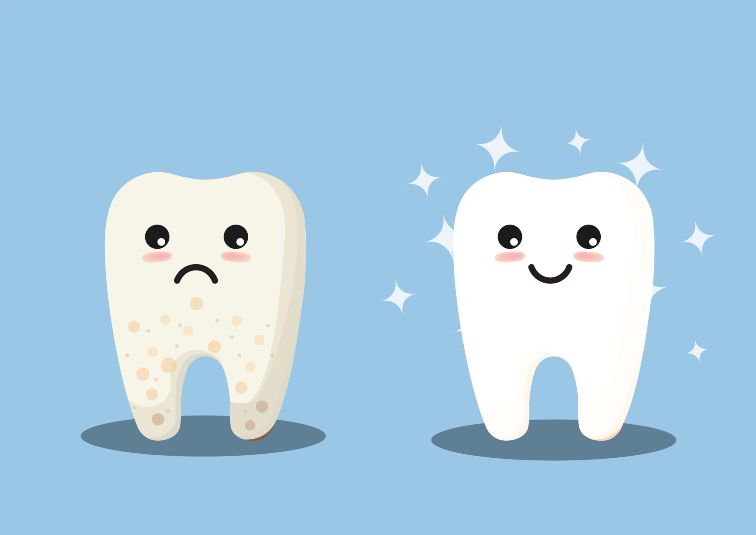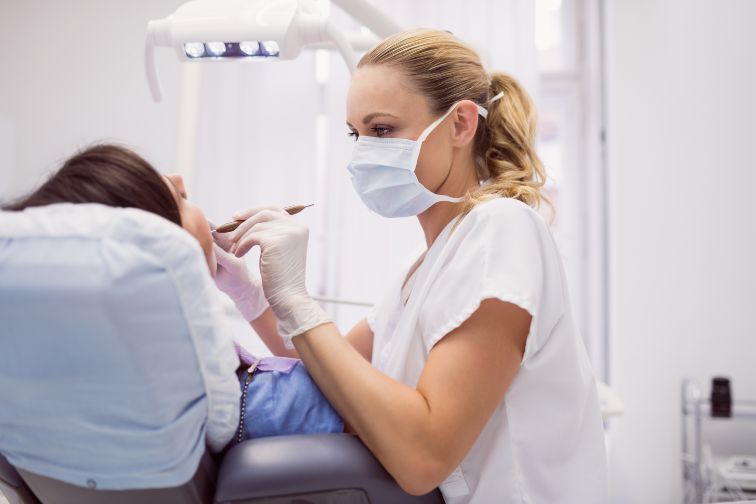Did you know that tooth enamel is the hardest human tissue? But interestingly enough, it has no living cells, which means it cannot repair itself if we break it. Well, not without expert dental help, that is.
The process of enamel mineralization starts at a very tender age (around 11th week to be exact). It ensures the formation of a thin, yet an extremely durable layer of calcified tissue that envelops the crown of the tooth. Why is this important?
Our teeth need to be strong enough to withstand blunt, heavy forces typically associated with chewing. This may explain why regular fluoride intake is crucial - it slows down the loss of minerals from the enamel and prevents tooth decay.
But as with most things, high levels of fluoride can also produce a countereffect. In this article, we will explore the risks of excess fluoride exposure and what can we do to get rid of dental fluorosis.
Sources of fluoride are many. This natural mineral is found in water, plants, soil, and various foodstuffs, such as grapes, raisins, and wine. When mixed with other minerals, it serves to protect the enamel surface by forming a more potent, acid-resistant teeth coating.
Essentially, we obtain it in two ways:
Think mouthwashes and toothpaste rich in fluoride content. Its main function is to strengthen your teeth and protect them from any outside effects, like bacteria or blunt force injury.
Also referred to as water fluoridation, it is a process of adjusting the quantity of this mineral into our drinkable water supplies. By approaching this matter systematically, we’re ensuring that the fluoride levels are present for optimal dental health.
Babies and little children under 8 years of age are the ones we need to look out for. Since a child’s teeth take time to develop fully, fluoride has to be ingested regularly through food and fluoridated water. Whenever necessary, it can also be taken in the form of supplements prescribed by your dentist or pediatrician.
Yet despite the obvious benefits, overexposure to this mineral at an early age can lead to the development of dental fluorosis in children.
In fact, adults, adolescents, and even children over the age of 8 cannot develop dental fluorosis. It is associated directly with young children, whereas the seriousness of this condition (also known as enamel fluorosis) depends on the duration, amount, and timing of fluoride consumption.

In order to answer the question “what is fluorosis?”, we need to know how to identify it. Luckily, that isn’t a tricky thing to do as fluorosis alters the look of tooth enamel (fluorosis teeth).
The discolouration can vary, depending on the severity of the disease. Mild fluorosis is usually diagnosed when thin white spots appear during tooth development, similar to enamel hypoplasia. But in case of severe fluorosis, a child’s smile may also reveal:
Although fluoride is often recommended as a preventive action for oral health in both children and adults, too much of it can be detrimental. Yes, there is such a thing called overbrushing your teeth - so we advise teaching your kids moderation when developing their oral hygiene habits.
Who would have thought that our teeth’s greatest ally could also be what causes fluorosis? In fact, the number one cause for dental fluorosis is improper use of dental products.
Oftentimes, while brushing their teeth, children might enjoy the taste of their toothpaste - so much that they end up eating it rather than spitting it out. Rest assured, it’s probably not that big of a deal. We’ve all been there. But if your child happens to make a habit out of it, it might be a good time to react.
Dental products are not the only cause of fluorosis, though. If for any medical reason a child’s prescribed higher amounts of fluoride supplements than necessary, the risk of fluorosis increases as well, however inadvertently.
Tap water and some fruit juices also tend to contain an ample quantity of fluoride, which can blur the line between neglecting and maintaining overall teeth health. This is particularly important to take into consideration when planning on using supplements.

Most of the time, fluorosis is so mild that actual treatment for fluorosis isn’t necessary. But there are cases when fluorosis may affect parts of the teeth that are hardly visible, like molars. So remember to keep a watchful eye!
The affected teeth can be notably improved by several fluorosis teeth treatment techniques, including:
Although dental fluorosis is not as severe as gingivitis or tooth decay, it’s not something you’d want to overlook. If you have any questions regarding how to treat dental fluorosis, contact your family dentist or us for additional information.
The issue of how to prevent dental fluorosis is rather simple - parental diligence is key.

If you’re getting your drinking water from a public system, make a request to your dentist or public health department to inform you about the level of fluoride. The addition of fluoride in drinking water is generally governed by the Australian Drinking Water Guidelines. Same goes if you prefer bottled water, well water or any other water source.
Once you get a better grasp of the amount of fluoride in your water, it might also be smart to take your child to see a dentist for a fluorosis checkup. We particularly advise this if you cannot determine whether your child requires a fluoride supplement or not.
Try and keep all fluoride-rich products away from young children. When it's time for brushing teeth, be ever-watchful like an owl because your child might end up swallowing some of the toothpaste.
In case a large quantity of fluoride gets swallowed, don’t worry. It’s OK. It may cause symptoms (nausea, vomiting, diarrhea, or abdominal pain), but a glass of milk helps bind to the excess fluoride and get it out of the system.
Although no severe cases were reported, hundreds of kids get sent to hospitals each year for ingesting too much fluoride.
So every time it’s time to brush teeth, just stay close to your child. Remember: a pea-sized amount of toothpaste is the way to go. It’s more than enough to ensure sufficient fluoride protection.
Perhaps try and make spitting out toothpaste a fun game so that your child can associate it with a pleasant experience. Or if you dislike the idea of encouraging kids to spit (understandable), simply buy your child a flavourless toothpaste.
As long as you keep the intake of fluoride to reasonable amounts and nowhere near the belly, their grin will tell you everything you need to know about their health.

